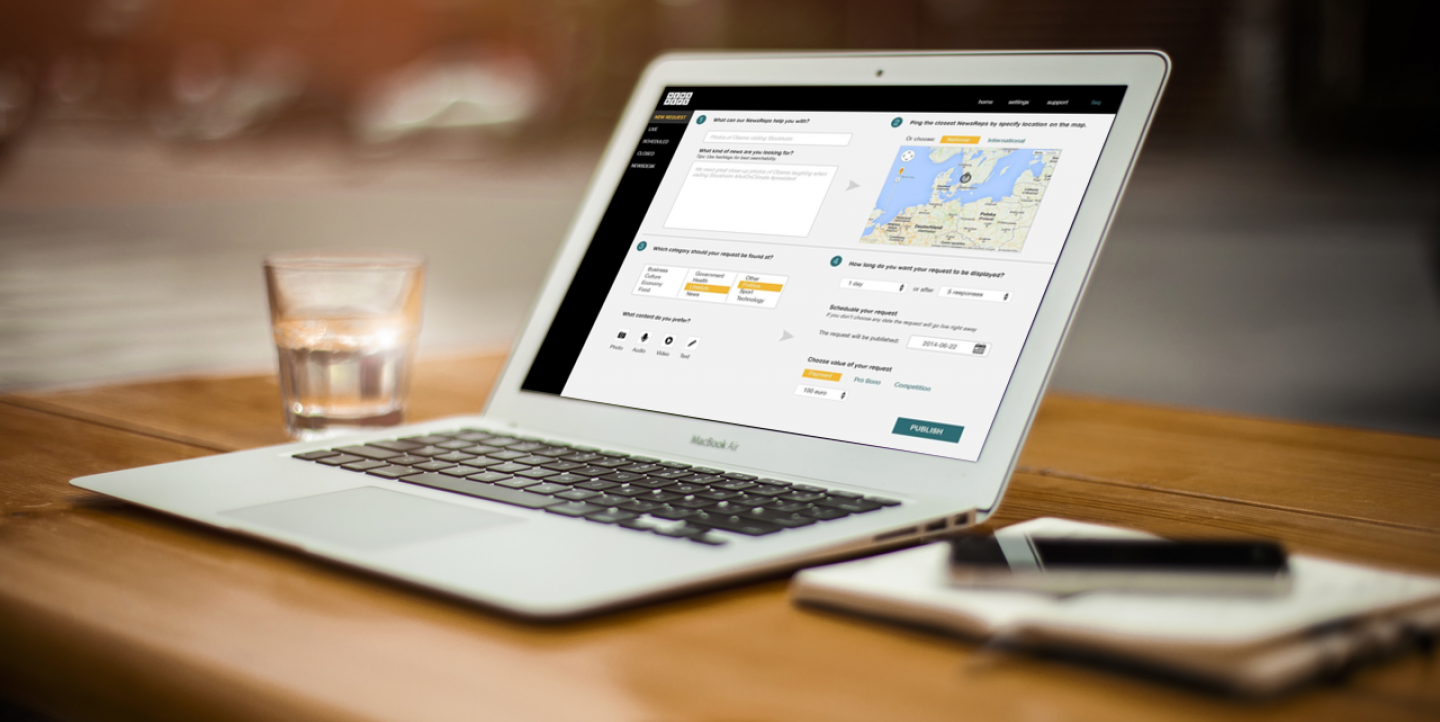Updated on March 12, 2015 at 11:13 a.m. EST
Techniques for sourcing user-generated content (UGC) vary from newsroom to newsroom, but two budding companies – Broadfy and Newsreps – want to play middleman between the user and the news outlet.
Broadfy and Newsreps launched separately in late 2014 with hopes to give citizens the power to disseminate information to news organizations. Each company has its own app where anyone – not just journalists – can upload his or her own images and videos to sell to newsrooms.
But as newsrooms better equip themselves with tools to source UGC content, the viability of startups that focus on connecting more users with those outlets remains an unanswered question.
“Those who are trying to connect newsrooms with content creators perhaps have the hardest of job of all,” explained Fergus Bell, a former social media and UGC editor at the Associated Press. Bell now works at SAM Desk, a platform for social media curation, searches and storytelling.
Bell emphasized that it is sometimes difficult for startups of this kind to build a strong and loyal following of citizen journalists, especially when those capturing breaking news are often sharing it on social media with their friends and family as the intended audience.
“For anyone to create an app, build a community and then rely on them to think to use that app when they encounter a breaking news event is very hard,” Bell wrote in an email to IJNet. “It isn't impossible though and some have done well by adapting.”
Check out the business models for Broadfy and Newsreps below and decide for yourself. If you try either platform, let us know what you think in the comments below or @IJNet on Twitter.
Newsreps
Newsreps launched in October 2014, but CEO Anders Nilsson and his team began working on the project in late 2013. Though they are still building an audience, Newsreps’ app is about to pass 3,000 downloads. Nilsson says the app averages 500 live users at any point during the day.
still building an audience, Newsreps’ app is about to pass 3,000 downloads. Nilsson says the app averages 500 live users at any point during the day.
In order for Newsreps to function, it needs two ingredients: People who want to take photos and shoot videos and news agencies that want to buy visual content.
So far, people from 42 countries have signed up for Newsreps, and Nilsson has news organizations on board from Sweden, Lebanon, Egypt, Jordan, Palestine, Iran, Turkey and Australia.
“We are in this business to complete — not compete — with news organizations,” Nilsson, a former journalist, said. “The editing still needs to be done at the editor’s desk.”
How it works: Users who download Newsreps have two options: They can accept a “news task” sent out by a news agency through the app, or they can upload a photo or video as a “news tip.”
If users accept a news task, they’ll go out and take the requested photos or record a video. The first person to submit his or her work receives a bulk of the payment, but others who pick up the task get compensated too. The lowest amount a news outlet can pay per news task is US$100.
As an alternative, users can upload news tips through the app. This way, the user can set the price he or she is willing to receive and choose a category for the content. News outlets can then sift through categories to find photos or videos they would like to purchase.
How it verifies content: When a Newsreps user submits content, the news organization receives the person’s contact information. It then becomes the publication’s responsibility to verify the photo or video.
Compensation model: If a user picks up a news task sent out through the app, the earliest person with the best content receives around US$70, and subsequent users get around US$10.
However, if the user gives a news tip that has value, the story starts at US$90. The upper limit is US$550.
Broadfy
Based in Spain, Broadfy is relatively new with more than 100 active users, though upwards of 300 people are registered.
Broadfy founder Raffaele Pecorario and his team are working to expand its network beyond Spain, and it has some users in other regions.
“We believe that citizen journalism responds to the demand for instant eyewitness information and original content from all parts of the globe,” Pecorario wrote in an email to IJNet.
How it works: The company recently launched an Android mobile app, and it will soon release an iOS app too. Users can also create an account online and upload photos and videos from their phones directly to the website. News outlets then browse the online marketplace and pay for the content.
How it verifies content: Though Broadfy encourages publications to verify the content they purchase, a team of Broadfy editors tests the veracity of the source first. Editors analyze the metadata of the photos or videos and check for possible alterations done through photoshop. Lastly, Broadfy tries to cross reference the events taking place in the photos or videos with other social media content.
Compensation model: Users receive between 50 and 75 percent of the profits from a photo or video. Broadfy’s photo and video prices decrease as more time elapses since the user uploaded the content.
Photos:
- EUR49: Cost of a photo up to 12 hours after a user uploads it to Broadfy
- EUR29: Between 12 and 24 hours after the user uploads it to Broadfy
- EUR19: More than 24 hours after a user has uploaded it to Broadfy
Videos:
- EUR139: Cost of a video up to 12 hours after a user uploads it to Broadfy
- EUR69: Between 12 and 24 hours after the user uploads it to Broadfy
- EUR49: More than 24 hours after a user has uploaded it to Broadfy
Both images courtesy of Newsreps.

